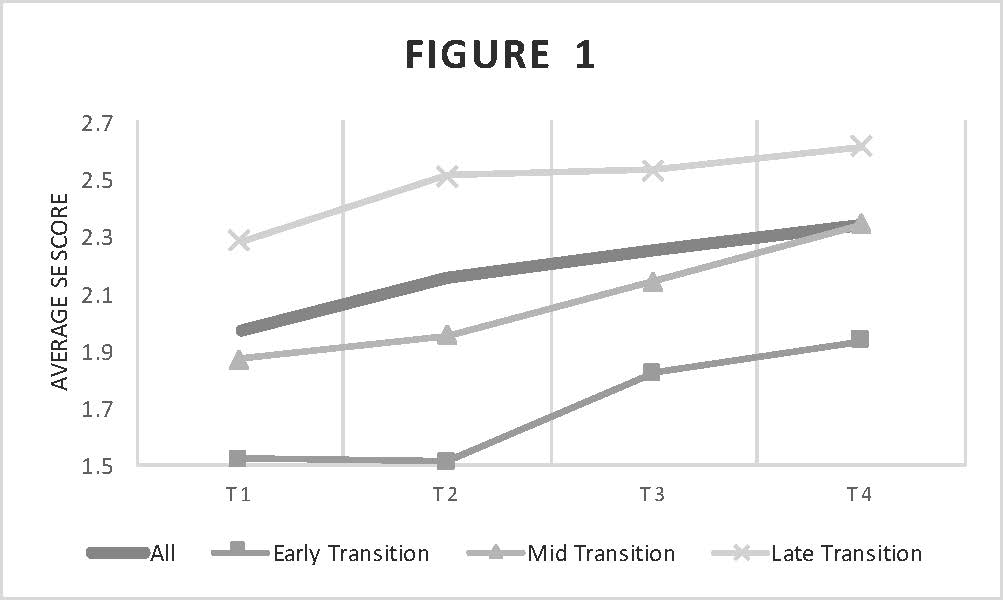Assessing Self-Efficacy During the Transition from Pediatric to Adult Liver Transplant Care.
University of Michigan, Ann Arbor, MI
Meeting: 2017 American Transplant Congress
Abstract number: 81
Keywords: Liver transplantation, Pediatric
Session Information
Session Name: Concurrent Session: Pediatric Liver
Session Type: Concurrent Session
Date: Sunday, April 30, 2017
Session Time: 2:30pm-4:00pm
 Presentation Time: 3:42pm-3:54pm
Presentation Time: 3:42pm-3:54pm
Location: E271a
Purpose: As part of ongoing quality improvement efforts, this project aimed to investigate changes in self-efficacy among adolescent / young adult liver transplant recipients participating in a focused transition program.
Methods: An empirically derived measure of transition readiness (TRS-2) was serially administered to patients at routine liver transplant clinic appointments. We performed a principal components analysis on the responses, identifying a primary component centered around self-efficacy (SE). Cronbach's alpha (α) was used to assess internal consistency. We calculated mean SE scores for each patient at each time point. Normality testing was performed. We categorized the patient's stage of transition at time 1 (T1), and used repeated-measures ANOVA to assess the difference between the mean SE scores at 4 separate time points. Phases of transition were defined as early (<13y), mid (13-15y), and late (≥16y). Pearson's correlation coefficient (r) was calculated to assess the relationship between length of time in the transition program and change in SE score over the study period.
Results: 84 patients have completed the TRS-2 at least once. Mean age at T1 was 15.5y (range 11.2-21.7). Mean total time in the transition program was 2.6y (range 0.5-5.4). Reliability of the SE score was strong with an α of 0.85. Repeated-measures ANOVA showed that mean SE score differed based on time point among patients in mid or late transition at T1 (p-values 0.01 and < 0.01), but not among patients in early transition (p-value = 0.267). Change in SE score was positively correlated with the total length of time in the transition program (r = 0.347, p = 0.004).
Change in SE score was positively correlated with the total length of time in the transition program (r = 0.347, p = 0.004).
Conclusions: These results demonstrate strong reliability for an SE-focused assessment, allowing us to further refine our transition program. Results indicate that SE can be improved over time. Given the greater improvement observed with longer program participation, these results highlight self-efficacy as a potential area of focus for those patients in their final years in the pediatric transplant clinic. These findings reinforce the importance of examining factors other than age when considering readiness for transfer.
CITATION INFORMATION: Bilhartz J, Lopez M, Eder S, Fredericks E. Assessing Self-Efficacy During the Transition from Pediatric to Adult Liver Transplant Care. Am J Transplant. 2017;17 (suppl 3).
To cite this abstract in AMA style:
Bilhartz J, Lopez M, Eder S, Fredericks E. Assessing Self-Efficacy During the Transition from Pediatric to Adult Liver Transplant Care. [abstract]. Am J Transplant. 2017; 17 (suppl 3). https://atcmeetingabstracts.com/abstract/assessing-self-efficacy-during-the-transition-from-pediatric-to-adult-liver-transplant-care/. Accessed December 19, 2025.« Back to 2017 American Transplant Congress
